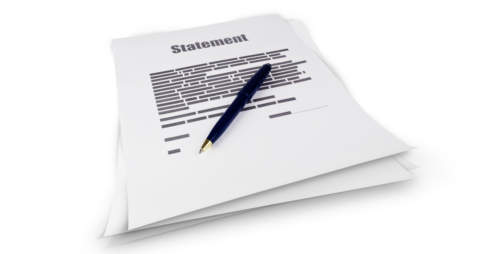You may think that an accessibility statement is what you create once you have developed your website, had it audited for compliance, your documents remediated and all your staff trained up in creating accessible content. But if there is organisational commitment to improving digital accessibility, then Media Access Australia’s Deputy CEO Natalie Collins believes the accessibility statement is a great place to start.

Website accessibility statements are an effective way to convey information on how best to navigate and optimise use of the website according to a person’s assistive technology or impairment.
The most effective accessibility statements incorporate:
- Clear and simple language
- The organisation’s commitment to accessibility and an accessible digital experience for website users and customers
- Multiple ways to contact the organisation
- Information on how users can customise their experience if they are using assistive technologies or have different needs
- Any known accessibility issues or limitations and plans or timeframes to make improvements
- Technology or techniques employed on the website that may assist users with assistive technology. It’s important to try to not use jargon words or technical terms here.
- The date of the accessibility statement
Honesty is the best policy
In addition to what is accessible, it is also important to identify information or areas of the website with known accessibility limitations. Being honest about what is inaccessible is also helpful to users, alerting them to the areas where they may experience challenges. But importantly you will need to provide an alternative way for users to still access information. This may be in the form of an alternative format. It is better to provide an accessible transcript if you have a video without audio description than no alternative at all.
Skilled staff equals good customer service
Sometimes it isn’t possible to anticipate every individual’s needs, or your organisation may be new to understanding the needs of a more diverse customer segment. A good way to cater for their needs is to provide efficient customer service and clear contact details for people to make contact if they find information that is not accessible to them. It is a good idea to provide multiple options, too. Rather than just a form on a website, also provide a phone number.
It is imperative that the staff responding to or answering calls are skilled up and understand the needs of their customer base. Disability awareness training is essential, and staff skilled in creating accessible content will be better prepared to respond to diverse enquiries and make great customer service representatives.
Websites change, so should your statement
Websites change. Your statement should be reviewed regularly to ensure it is kept up to date with changing functions and content.
The Access iQ website contains an example of an informative accessibility statement.
The Digital Accessibility Services team at Media Access Australia can assist with development of an accessibility statement and business processes to ensure the needs of all your customers are being met.
